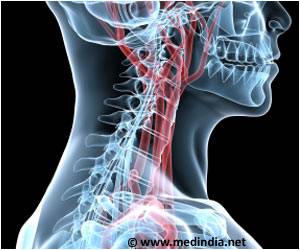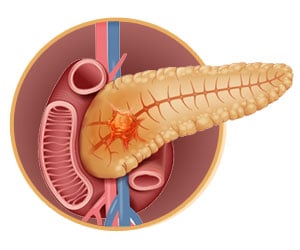A new research looking into cancer genome mutations has demonstrated how scientists can distinguish between the 'driver' mutations that drive cells towards cancer from the 'passenger'
A new research looking into cancer genome mutations has demonstrated how scientists can distinguish between the 'driver' mutations that drive cells towards cancer from the 'passenger' mutations that are a by-product of cancer cell development.
The study also found that at least one in nine genes could be removed without harming human cells.Many cancer genomes are full of mutations. The vast majority of these are likely to be passengers - mutations that don't contribute to the development of cancer but have occurred during the growth of the cancer - while a small minority are the critical drivers.
Prof Mike Stratton, senior author on the study from the Wellcome Trust Sanger Institute, said: "It is essential that we can distinguish the drivers from the passengers because knowing the driver mutations and hence the critical genes they are in leads to understanding of the cellular processes that have been subverted in cancers and hence to new drugs.
"Our study provides one example of how researchers can sift through the large numbers of a particular type of mutation present in cancer genomes in order to distinguish drivers from passengers."
One class of cancer gene - called a tumour suppressor gene - inhibits tumour formation, acting as a brake on the process. This type of gene has to be inactivated in or deleted from the genome of the cancer cell in order to release the brake, allowing cancer to develop.
The process that inactivates a tumour suppressor gene often involves deletion of both copies of the gene in the cancer (one copy originally inherited from the mother and one from the father). Therefore, in the past finding regions in which both copies of a gene are removed in many cancer cases has proven to be a productive way of pinpointing the location of new tumour suppressor genes.
Advertisement
Dr Graham Bignell, a lead author on the paper, said: "We analysed almost 750 cancer cell samples for deletions at known tumour suppressor genes and compared them to deletions at known fragile sites.
For instance, one key difference between the tumour suppressors and fragile sites was that both copies of tumour suppressor genes were usually deleted and it was rare to find only one copy deleted. In contrast, it was often the case that only one copy was deleted at fragile sites.
This provides a first-pass test to sift through for tumour suppressor genes: if both copies of a gene are usually deleted and one copy deleted only rarely then these deletions may be drivers and the gene may be a tumour suppressor. However, if it is common to find only one copy deleted then the deletions may be passengers and it may well be a fragile site.
The authors then used these signatures to look at the deletions that they found in cancers, which were currently unexplained. Three regions had the signature of a tumour suppressor gene, but many looked like fragile sites.
In aggregate, over the almost 750 cancer cell lines used in the study, one in nine genes was deleted and therefore not mandatory for the cells to live and grow.
Prof Stratton said: "This is one step in building a suite of tools to draw out the important suspects in cancer genetics...tools that will make the most of the massive efforts that lie ahead from organizations such as the International Cancer Genome Consortium, which will sequence as many as 500 samples from each of 50 cancer types over the next few years.
"Our results also illuminate novel findings that emerge from genome wide research, light that is shone on other corners of genome biology. While we mustn't overstate this - these are cancer cells growing in test tubes - it is fascinating to see the catalogue of genes that are not required for basic survival."
Source-ANI














